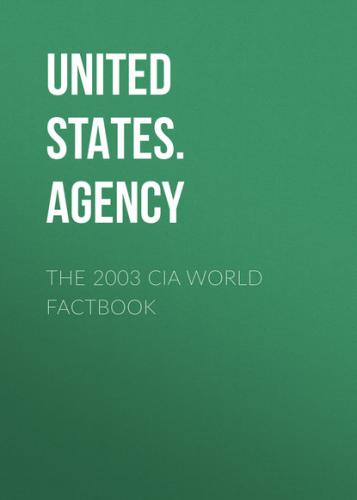umbrella political organization); Radical Civic Union or UCR [Angel
ROZAS]; Federal Recreate Movement [Ricardo LOPEZ MURPHY]; several
provincial parties
Political pressure groups and leaders:
Argentine Association of Pharmaceutical Labs (CILFA); Argentine
Industrial Union (manufacturers' association); Argentine Rural
Society (large landowners' association); business organizations;
General Confederation of Labor or CGT (Peronist-leaning umbrella
labor organization); Peronist-dominated labor movement; Roman
Catholic Church; students
International organization participation:
AfDB, Australia Group, BCIE, BIS, ECLAC, FAO, G-6, G-15, G-19,
G-24, G-77, IADB, IAEA, IBRD, ICAO, ICC, ICCt, ICFTU, ICRM, IDA,
IFAD, IFC, IFRCS, IHO, ILO, IMF, IMO, Interpol, IOC, IOM, ISO, ITU,
LAES, LAIA, Mercosur, MINURSO, MIPONUH, MONUC, MTCR, NSG, OAS,
OPANAL, OPCW, PCA, RG, UN, UNCTAD, UNESCO, UNFICYP, UNHCR, UNIDO,
UNIKOM, UNMEE, UNMIBH, UNMIK, UNMOP, UNMOVIC, UNTSO, UNU, UPU, WCL,
WCO, WFTU, WHO, WIPO, WMO, WToO, WTrO, ZC
Diplomatic representation in the US:
chief of mission: Ambassador Jose Octavio BORDON
chancery: 1600 New Hampshire Avenue NW, Washington, DC 20009
consulate(s) general: Atlanta, Chicago, Houston, Los Angeles, Miami,
New York
FAX: [1] (202) 332–3171
telephone: [1] (202) 238–6400
Diplomatic representation from the US: chief of mission: Ambassador James D. WALSH; note - Lino GUTIERREZ is designated to replace Ambassador WALSH embassy: Avenida Colombia 4300, C1425GMN Buenos Aires mailing address: international mail: use street address; APO address: Unit 4334, APO AA 34034 telephone: [54] (11) 5777–4533 FAX: [54] (11) 5777–4240
Flag description:
three equal horizontal bands of light blue (top), white, and light
blue; centered in the white band is a radiant yellow sun with a
human face known as the Sun of May
Economy Argentina
Economy - overview:
Argentina benefits from rich natural resources, a highly literate
population, an export-oriented agricultural sector, and a
diversified industrial base. Over the past decade, however, the
country has suffered recurring economic problems of inflation,
external debt, capital flight, and budget deficits. Growth in 2000
was a negative 0.8%, as both domestic and foreign investors remained
skeptical of the government's ability to pay debts and maintain the
peso's fixed exchange rate with the US dollar. The economic
situation worsened in 2001 with the widening of spreads on Argentine
bonds, massive withdrawals from the banks, and a further decline in
consumer and investor confidence. Government efforts to achieve a
"zero deficit," to stabilize the banking system, and to restore
economic growth proved inadequate in the face of the mounting
economic problems. The peso's peg to the dollar was abandoned in
January 2002, and the peso was floated in February; the exchange
rate plunged and inflation picked up rapidly, but by mid-2002 the
economy had stabilized, albeit at a lower level. Strong demand for
the peso compelled the Central Bank to intervene in foreign exchange
markets to curb its appreciation in early 2003. Led by record
exports, the economy began to recover with output up 5.5% in 2003,
unemployment falling, and inflation sliced to 4.2% at year-end.
GDP:
purchasing power parity - $403.8 billion (2002 est.)
GDP - real growth rate:
−10.9% (2002 est.)
GDP - per capita:
purchasing power parity - $10,500 (2002 est.)
GDP - composition by sector: agriculture: 5% industry: 28% services: 66% (2000 est.)
Population below poverty line:
37% (2001 est.)
Household income or consumption by percentage share:
lowest 10%: NA%
highest 10%: NA%
Inflation rate (consumer prices):
41% (2002, yearend)
Labor force:
15 million (1999)
Labor force - by occupation:
agriculture NA%, industry NA%, services NA%
Unemployment rate:
21.5% (37377)
Budget:
revenues: $44 billion
expenditures: $48 billion, including capital expenditures of $NA
(2000 est.)
Industries:
food processing, motor vehicles, consumer durables, textiles,
chemicals and petrochemicals, printing, metallurgy, steel
Industrial production growth rate:
1% (2000 est.)
Electricity - production:
97.17 billion kWh (2001)
Electricity - production by source: fossil fuel: 52.2% hydro: 40.8% other: 0.2% (2001) nuclear: 6.7%
Electricity - consumption:
92.12 billion kWh (2001)
Electricity - exports:
5.662 billion kWh (2001)
Electricity - imports:
7.417 billion kWh (2001)
Oil - production:
828,600 bbl/day (2001 est.)
Oil - consumption:
486,000 bbl/day (2001 est.)
Oil - exports:
NA (2001)
Oil - imports:
NA (2001)
Oil - proved reserves:
2.927 billion bbl (37257)
Natural gas - production:
37.15 billion cu m (2001 est.)
Natural gas - consumption:
31.1 billion cu m (2001 est.)
Natural gas - exports:
6.05 billion cu m (2001 est.)
Natural gas - imports:
0 cu m (2001 est.)
Natural gas - proved reserves:
768 billion cu m (37257)
Agriculture - products: sunflower seeds, lemons, soybeans, grapes, corn, tobacco, peanuts, tea, wheat; livestock
Exports:
